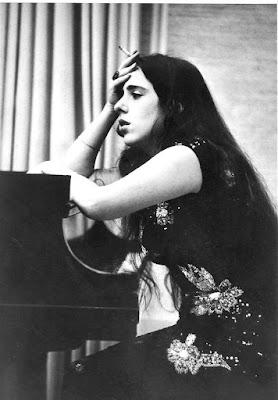On December 6, 1927, the New York Sun reported
that Harry A. Hyman “took title yesterday to three four-story buildings 141 to
145 West Seventy-ninth street.” Among
those vintage houses was the home of Daniel Frohman, famous theater producer. The Frohman family have lived there since
1884. Hyman had recently formed the 145
West Seventy-Ninth Street Corporation, of which he was president. The article noted, “The purchaser is to
demolish the buildings at once and improve the property with a sixteen-story
and penthouse apartment building.”
Hyman had already commissioned apartment house
architect Emery Roth to design the building.
Roth’s romantic, 1920s blend of Renaissance and medieval architecture
included pointed Gothic arches, heraldic carvings and a brown brick façade
peppered with various-sized stone blocks to give the illusion of age. In an early example of developers’ egoism
that would climax with names like Helmsley and Trump being emblazoned on
buildings throughout the city, Hyman had Roth include his monogram—H-A-H—on
terra cotta shields at the third floor. Completed
in September 1928, the Manchester House had “suites of one, two, three and four
rooms,” according to The Sun, which added, “the three and four rooms
have dining alcoves.”
Pianist Paolo Gallico
was among the initial residents.
Described by The Musical Monitor as “an accomplished pianist and
versatile composer,” his oratorio The Apocalypse had premiered at
Carnegie Hall in 1922 to high acclaim. His
apartment doubled as his studio for teaching piano. Gallico’s son, Paul, Jr. would go on to
achieve fame as an author.
Paolo Gallico (original source unknown)
Other early residents were the Abraham Wolf family. It appears that the Wolfs were opposed to a
romance that formed between their daughter, Miriam, and Edwin Freed. If so, their objections failed. On May 7, 1930, The Talking Machine &
Radio Weekly reported, “the secret marriage last December of Edwin Freed,
younger brother of Joseph D. R., Leo and Arthur Freed, well known radio
manufacturers, to Miss Miriam Wolf…was announced last week.”
Living here at the time, were Clarence D. Costello, his
wife, and his sister-in-law, Essie Kerns, who was a widow. Essie, who was about 40 years old, was deeply
tormented in the winter of 1930. On the
afternoon of December 1, 16-year-old Daniel Anderson was walking along the
Coney Island boardwalk when he saw Essie wade into the icy surf. The Standard Union reported, “Without taking time to divest himself of
his clothing,” he plunged into the ocean after her. “Screaming, ‘Let me die!’ she fought his
efforts at rescue,” said the article.
The teen was able to overpower her, and as he was pulling her in, a deli
operator waded in to help. They carried
her to a store in the Half Moon Hotel.
There, other than admitting her name, Essie refused to tell the police
anything about herself or her reason for attempting suicide. “She was taken to Kings County Hospital for
observation,” concluded the article.
An erudite resident was
Walter Beardslee Wildman, who taught Latin at the private Trinity School. An 1898 graduate of Trinity College, he and
his wife, Bessie F. Wildman, had a teenaged son, Walter Jr., born in 1915. Following Wildman’s death, Bessie and Walter
remained in the Manchester House apartment.
Like his father, Walter Jr. attended Trinity College and then New York
University’s College of Medicine. The
35-year-old anesthesiologist was still living with his mother here when he
became engaged to Patricia Ann Grayson in September 1950.
image via compass.com
A top floor apartment
became home to songwriter and singer Laura Nyro in the late 1960s. While living here, she wrote hit songs like “Blowing
Away,” “Wedding Bell Blues," “Stoned Soul Picnic,” and “Eli’s Coming.” A consistent visitor to the apartment was her
agent, David Geffen.
Laura Nyro in a 1970s publicity shot. (original source unknown)
In her 2002 Soul
Picnic: The Music and Passion of Laura Nyro, author Michael Kort describes
Nyro’s apartment saying,
A step up in class from her Eighth Avenue place, the apartment was still
quite small, essentially one room with a foldout bed, a tiny kitchen, and a
piano facing a wall on which she’d placed a heart-shaped mirror. However, it opened onto a huge terrace, with
a large black water tower to one side.
After nearly a century,
Emery Roth’s Manchester House is nearly unchanged. Its picturesque lower façade still charms the
passersby who pause to appreciate it.
image via compass.com





.png)

Beautiful building.
ReplyDelete